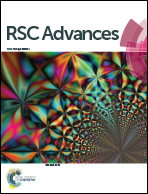The role of nitric oxide and autophagy in liver injuries induced by selenium deficiency in chickens
Abstract
Selenium (Se) is recognized as a necessary trace mineral in animal diets, including those of birds. Se deficiency induces a number of diseases and injuries in chickens, including liver damage. Nitric oxide (NO) is an essential messenger molecule associated with inflammation and oxidative stress. Autophagy is a cellular pathway that is crucial for development, differentiation, survival, and homeostasis, which maintain the balance of energy and nutrients for basic cell functions in the liver. However, little is known about the role of NO and autophagy in liver injured induced by Se deficiency. The aim of this study was to evaluate the influence of Se deficiency on NO and autophagy in chicken livers. A total of 300 1 day-old sea blue white laying hens were divided into two groups (n = 150 per group), and each of those groups was randomly divided into groups so that the trials were conducted in triplicate. The Se deficiency group (−Se) was fed a Se-deficient corn-soy basal diet (Se content 0.02 mg kg−1), and the Se-adequate group used as a control (+Se) was fed the same basal diet supplemented with Se at 0.2 mg kg−1 (sodium selenite). The liver tissue was collected and examined for pathological observations, inducible NO synthase (iNOS)-NO activities (including NO content and iNOS activity), and mRNA and protein levels of autophagy genes at 15, 25, 35, 45, 55 and 65 days old. The results showed that numerous autophagosomes, as well as a low density of organelles and glycogen, were observed in the chicken livers from the Se deficiency group. In addition, the NO content and iNOS activity in the Se deficiency group were higher (P < 0.05) than in the control group. Transcript expression of autophagy genes (LC3-I, LC3-II, ATG5, Dynein and Beclin1) increased significantly (P < 0.05), and TOR gene expression fluctuated (first increased and then decreased) in the Se-deficient group compared with that in the corresponding control group. Meanwhile, the protein expression of autophagy genes (LC3-I, LC3-II, Dynein and Beclin1) also increased significantly (P < 0.05) in the Se-deficient group. This indicated that NO and autophagy are involved in the development of liver injury (pathological processes), which is induced by Se deficiency.


 Please wait while we load your content...
Please wait while we load your content...